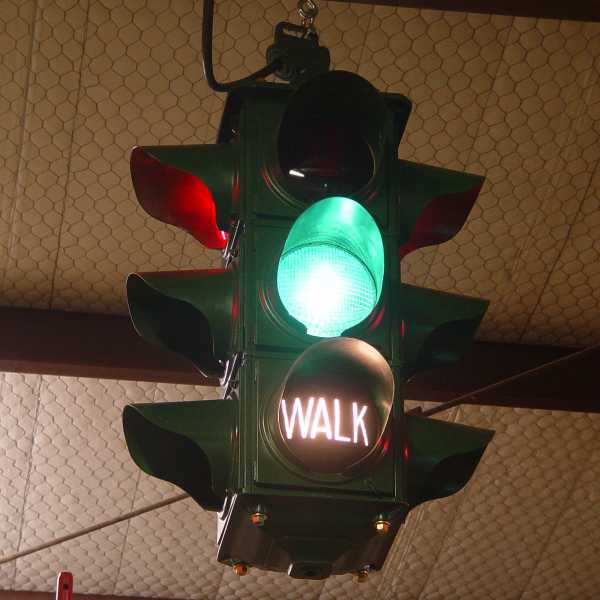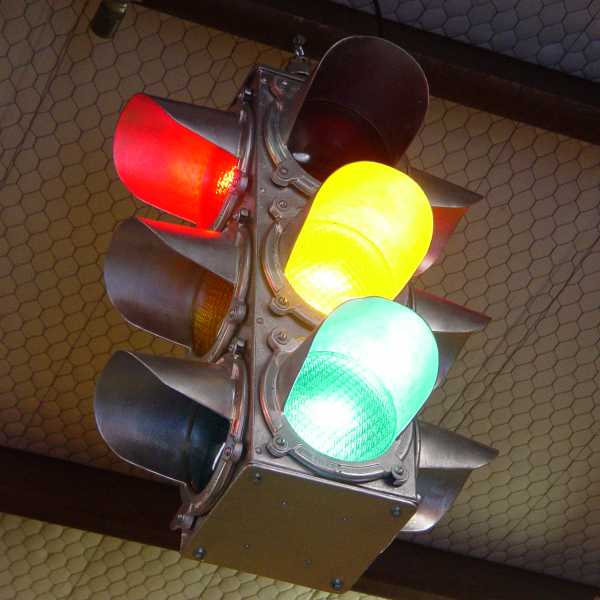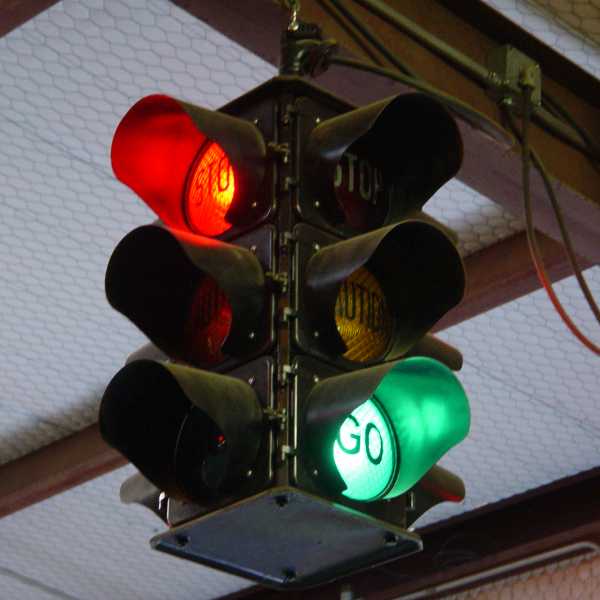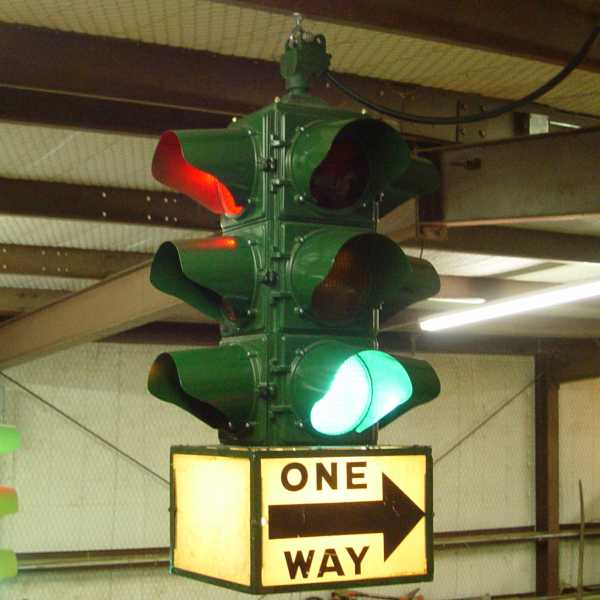Willis Lamm's
|
|
TRAFFIC SIGNAL APPLICATIONS FOR SET DECORATION |
Click on each photo to see a larger view of each signal.
| WW-II Era 4-Way Signals |
|
Crouse-Hinds D / DT
Crouse-Hinds was one of the more prolific manufacturers of traffic signals. Their Type D and DT signals were virtually identical from the outside, the DT being more advanced internally to minimize dust and moisture intrusion. Type D signals were made during WW-II and through 1951. Internally improved DT signals were made from 1952 through around 1959. These were very well made signals and quite a number of them are still in service on city streets today, particularly in historic districts. The first example is a Crouse-Hinds DT with tunnel visors. The provenance of this particular signal is New Orleans. The signal is equipped with period correct "smiley" lenses and this display includes a protected left turn pendant (which can be removed.) Also this particular model has removable visors so that the tunnel visors can be exchanged with "cutaway" visors as shown in the next signal. The second signal is a DT 3-section signal in a two color configuration where the bottom section was used as a "WALK" indication for pedestrians. These signals were most commonly configured with the more conventional red-yellow-green indications, however in the 1940s and 1950s, many states still permitted two color signals. |


|
|
Darley D-200
The Darley D-200 was W. S. Darley & Co.'s "twelve bulb" signal. Each indication had a separate bulb behind it so that red was on the top / green on the bottom on all four sides and the signal did not have to show a yellow indication on the side that was changing from red to green. The outward appearance of the D-200 was virtually identical to the earlier "three bulb" C-810. The orientation of the lens colors and the sequencing were all that were significantly different. The D-200 came out around WW-II and was discontinued in the early 1960s. There are a number of these signals still in service in small towns. |

|
|
Eagle Pagoda
The Eagle Pagoda style signal was produced from the early 1940s to the early 1960s and were still seen in service in small towns into the early 1990s. They generally weren't replaced with more modern signals unless they failed or were damaged. This is an earlier style "Eaglelux" model that came out with lettered lenses. Externally only an expert could distinguish it from 1950s through 1960s models. The Pagoda is available with lettered and non-lettered lenses. |

|
|
Marbelite with Presto Brite Sign
This Marbelite is a classic WW-II configuration from Seattle, complete with a lighted "Presto Brite" sign box. The sign boxes typically indicated one-way directions or restrictions such as "NO TURNS," NO U-TURN" or "DO NOT ENTER." |

|
Signals can be repainted for specific set requirements. Many can either be wire hung or adapted for post mounting.
Additional models and designs can be located for specific requirements.
Continue to Part Three
Return to Part One
Return to Signals Page